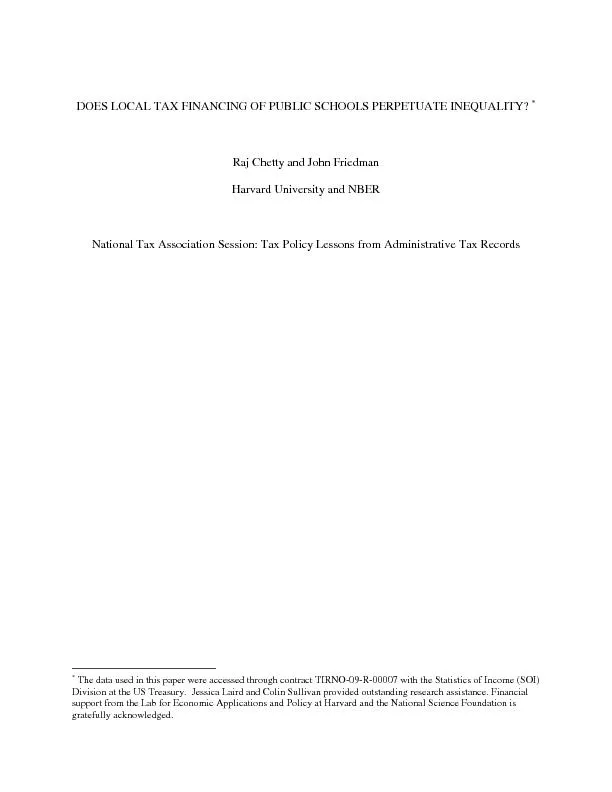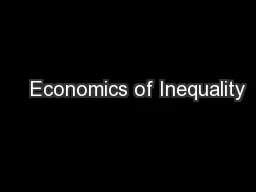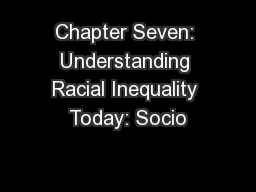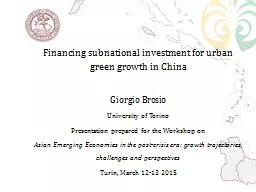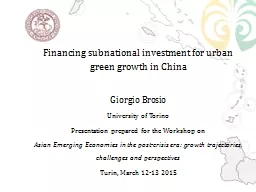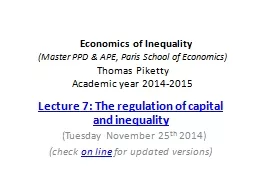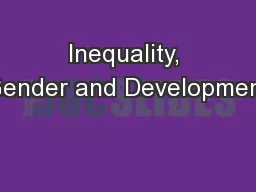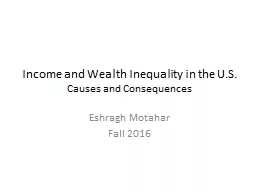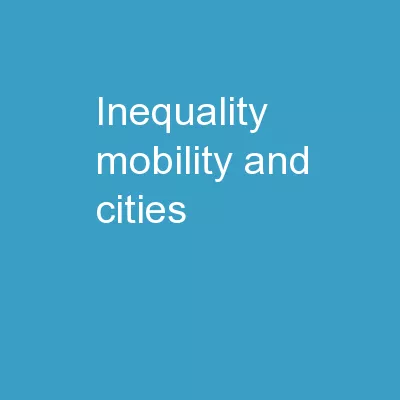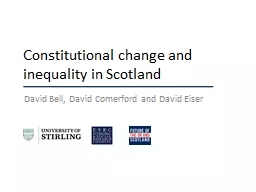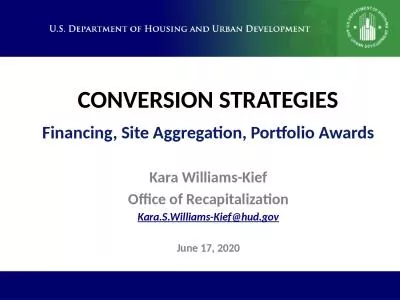PDF-DOES LOCAL TAX FINANCING OF PUBLIC SCHOOLS PERPETUATE INEQUALITY? ...
Author : tatiana-dople | Published Date : 2016-07-08
Raj Chetty and John Friedman Harvard University and NBER National Tax Association Session Tax Policy Lessons from Administrative Tax Records The data used in
Presentation Embed Code
Download Presentation
Download Presentation The PPT/PDF document "DOES LOCAL TAX FINANCING OF PUBLIC SCHOO..." is the property of its rightful owner. Permission is granted to download and print the materials on this website for personal, non-commercial use only, and to display it on your personal computer provided you do not modify the materials and that you retain all copyright notices contained in the materials. By downloading content from our website, you accept the terms of this agreement.
DOES LOCAL TAX FINANCING OF PUBLIC SCHOOLS PERPETUATE INEQUALITY? ...: Transcript
Download Rules Of Document
"DOES LOCAL TAX FINANCING OF PUBLIC SCHOOLS PERPETUATE INEQUALITY?
..."The content belongs to its owner. You may download and print it for personal use, without modification, and keep all copyright notices. By downloading, you agree to these terms.
Related Documents

